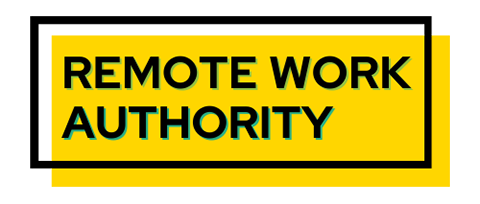Productivity theater is a common workplace practice where employees prioritize performative work over tasks that drive business outcomes. They do work that makes them appear busy to please their boss or pass time. A performance management system properly identifies productive tasks and measures outcomes.
The debate over remote work vs. working in the office is filled with ironies. One of the biggest is that bosses want workers back so that they can see them working, yet they want to see busyness and mistake it for productivity. They are unknowingly the ringmasters in productivity theater, a term that refers to the act of prioritizing work that seems productive (performative work) over tasks that provide value.
What Is Productivity Theater
It is easy to call workers “goldbrickers,” employees who appear busy but are dragging out simple tasks to fill their hours. Some workers do this, of course, and abuse remote work. But bosses often set the stage for this behavior for all workers.


When other hard-working employees experience a lull in daily activities, discuss a project with coworkers, or wait for data or information, they may feel that they must activate their screens or shuffle papers on their desks to appear busy. If the boss perceives idleness, they may turn their attention to menial tasks to prevent it. Alternatively, a job may not have enough substantive duties to engage an employee eight hours a day, but for fear of losing their job, they try to prove their worth through busyness.
Curtain Up On Productivity Theater
How does productivity theater play out? To fill up time, employees may either seem to be busy, perform repetitious tasks, or do what is required, whether it makes sense or not.
- Keeping screens awake: Occasionally clicking the mouse or using tools like mouse jigglers or auto-responders to emails to create the illusion of working long hours.
- Booking excessive meetings: Calling unnecessary meetings to address issues that could quickly be resolved or discussed in a Slack message.
- Duplicating efforts: Doing unnecessary tasks or performing tasks that someone else is doing
- Micromanaging tasks: Obsessively checking on the progress of others and micromanaging their work
- Focusing on metrics over results: Measuring the wrong metrics to make employees and departments shine while ignoring what should be measured.

If you read the above list carefully, you can easily see how either management or employees can have a part in productivity theater. They may be doing what has “always been done.” It is a charade that has several consequences:
- Takes time that could be better devoted to other tasks that contribute to business goals
- Create a culture of fear and distrust even when work is delegated
- Reduces innovation and creativity
- Ignores variables that are accurate measures of productivity in a given work setting
- Leads to burnout as workers may be putting in long hours without accomplishing what needs to be done
Cost Of Productivity Theater
A recent survey by Quickbase clarifies the problem. Of 1,000 people surveyed
- 53% spent over 10 hours a week trying to get information from other workers and systems
- 22% claim this process took over 20 hours
- 58% spent less than 20 hours per work on “meaningful work that drives results.”
When companies have technology in place, the applications may not be synced. Workers must examine spreadsheets, apps, PDFs, databases, and documents to get information and then transfer or reenter data in the app used for the project. Those surveys reported 77 different systems and tools in use, so an average worker used 10 tools to complete a project.
To make do with labor on hand, workers may do projects outside their skillset frequently (43%) or very frequently (7%). The process may help people expand their skills, but at a cost. Applying ad-hoc solutions may get the job done in ways that usually take more time and add to the bottom line.
Navigating the fragmented information systems keeps people busy, doing what is considered “gray work.” The larger and more complex a work environment, the more likely it is that people spend part of their week in the mud. The International Data Corporation (IDC), the premier global market intelligence firm, found that in a 1,000-person organization, gray work costs the company $2.5 million.

How Performance Management Can Add Value To Work
Abandoning productivity theater in favor of crew productivity requires a change in management philosophy to incorporate performance management. This approach tracks skill development and work performance based on a personalized work plan That involves 5 steps:
- Setting expectations. Managers define job roles, responsibilities, and performance goals and communicate them to employees.
- Continuous feedback. Managers frequently discuss progress and concerns with their charges, offering guidance when needed. The feedback will help employees adjust their performance to meet expectations.
- Performance evaluation. While feedback is ongoing, more formalized performance evaluations measure the employee’s performance against the manager’s expectations.
- Professional development. To help workers perform their jobs better, acquire more skills, and help them prepare for more responsibility, managers should offer additional training and mentoring opportunities along with entrusting workers with additional responsibilities.
- Recognition and rewards. Keeping employees motivated and engaged involves recognizing exceptional performance and rewarding it with praise, raises,
Advantages Of Performance Management
The advantage of this approach is that it increases productivity, keeps employees engaged, and improves company retention rates. Whether an employee works in the office or a remote or hybrid arrangement, using a performance management approach reduces the waste and drama of productivity theater. Employees are clear on the meaningful work they are expected to perform. They may have to do occasional gray work, but it is different from what they are evaluated on.
To get on board with performance management, companies need to make some general changes in addition to developing a plan for each employee.

- Emphasize outcomes, not outputs. Determine the actual results that employees are achieving rather than measuring the number of hours worked or emails sent.
- Empower employees hired for their skills and talent. Trust them! Assume that employees can manage their own time and work without being micromanaged, no matter where they are located.
- Promote transparency and communication. When there is open communication between managers and employees, everyone is clear on expectations and goals.
- Invest in tools, technology, and training. Give employees the tools and technology they need to be productive and efficient, and make sure they know how to use it.
- Revamp company culture, if necessary, to create one of well-being. Benefits and programs should support employee well-being, which often means flexible work arrangements and mental health resources.
- Lead by example. Managers should buy into the values of performance management, set a good example by being productive, and avoid productivity theater focused on appearances instead of outcomes.


